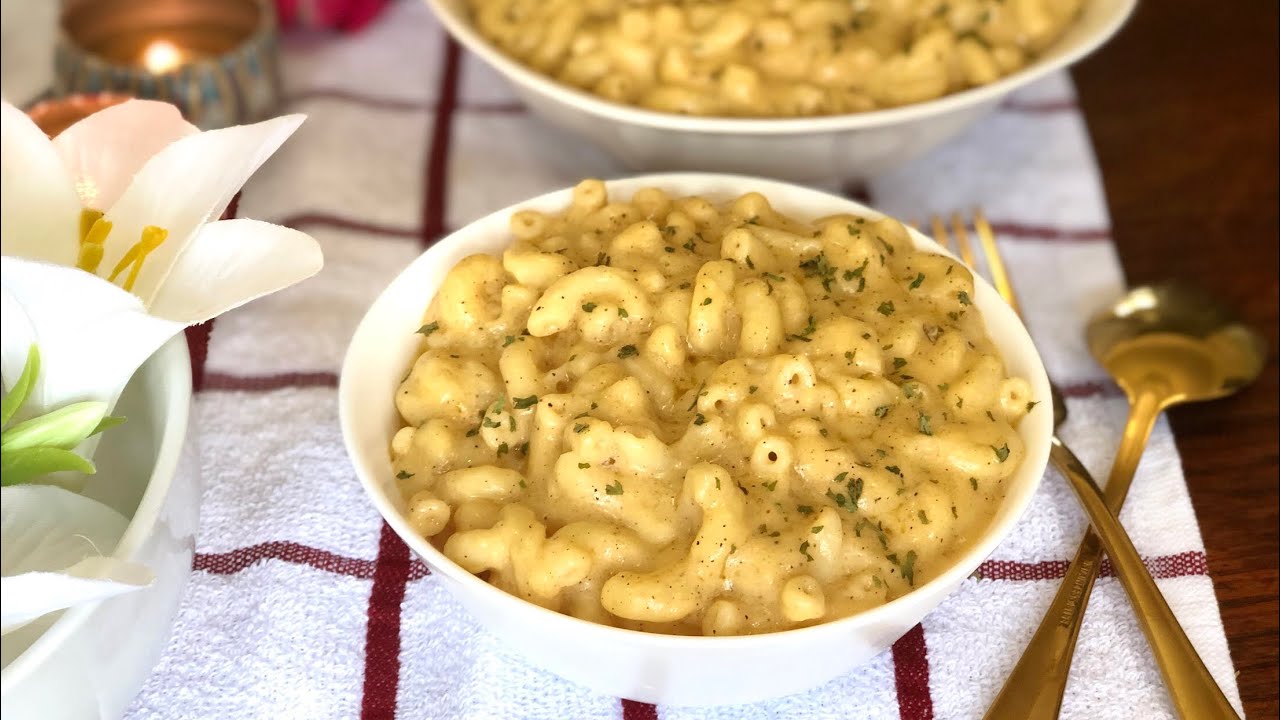Yummy Mac n Cheese

History of Mac n Cheese
Pasta and cheese casseroles were recorded in the 14th century in the Italian cookbook, Liber de Coquina, which featured a dish of parmesan and pasta. A cheese and pasta casserole known as makerouns was recorded in the 14th century medieval English cookbook, the Forme of Cury. It was made with fresh, hand-cut pasta which was sandwiched between a mixture of melted butter and cheese. The recipe given (in Middle English) was:
Take and make a thynne foyle of dowh. and kerve it on peces, and cast hem on boillyng water & seeþ it wele. take chese and grate it and butter cast bynethen and above as losyns. and serue forth.
This is the above recipe in modern English:
Make a thin foil [sheet] of dough and carve [cut] it in pieces. Cast [place] them in boiling water and seethe [boil] them well. take cheese and grate it and add it and cast [place] butter beneath and above as with losyns [a dish similar to lasagne], and serve forth [serve].
The first modern recipe for macaroni and cheese was included in Elizabeth Raffald's 1770 book, The Experienced English Housekeeper. Raffald's recipe is for a Béchamel sauce with cheddar cheese—a Mornay sauce in French cooking—which is mixed with macaroni, sprinkled with Parmesan, and baked until bubbly and golden. Another recipe from 1784 stated that the small tubes of macaroni must be boiled, then drained in a sifter before being moved to a frying pan. Heavy cream is then added to the macaroni along with a "knob of butter" rolled in flour, and it must be cooked for five minutes before being transferred to a dish and topped with toasted Parmesan and pepper. The famous British Victorian cookbook Mrs Beeton's Book of Household Management included two instances of "Macaroni, as usually served with the Cheese Course". One of them states:
The macaroni, (which should be "tender but perfectly firm, no part being allowed to melt, and the form entirely preserved" – lest one be tempted to cook it for so long it actually disintegrated) is then topped with more cheese, pepper and breadcrumbs, before receiving a final dose of melted butter for good measure and being placed before a "bright fire" to brown the crumbs, or grilled with a salamander broiler.
In the United Kingdom, during the 2010s, it has seen a surge in popularity, becoming widespread as a meal and as a side order in both fast food and upmarket restaurants.
US history
The US president Thomas Jefferson and James Hemings, his chef and slave, encountered macaroni in Paris and brought the recipe back to Monticello. Jefferson drew a sketch of the pasta and wrote detailed notes on the extrusion process. In 1793, he commissioned the US ambassador to France William Short to purchase a machine for making it. Evidently, the machine was not suitable, as Jefferson later imported both macaroni and Parmesan cheese for his use at Monticello. In 1802, Jefferson served "a pie called macaroni" at a state dinner. The menu of the dinner was reported by Reverend Manasseh Cutler, who apparently was not fond of the cheesy macaroni casserole. Nevertheless, since that time, baked macaroni and cheese has remained popular in the United States.
Baked macaroni and cheese
A recipe called "macaroni and cheese" appeared in the 1824 cookbook The Virginia Housewife written by Mary Randolph. Randolph's recipe had three ingredients: macaroni, cheese, and butter, layered together and baked in a hot oven. The cookbook was the most influential cookbook of the 19th century, according to culinary historian Karen Hess. Similar recipes for macaroni and cheese occur in the 1852 Hand-book of Useful Arts, and the 1861 Godey's Lady's Book. By the mid-1880s, cookbooks as far west as Kansas and Festus, Missouri, included recipes for macaroni and cheese casseroles. Factory production of the main ingredients made the dish affordable, and recipes made it accessible, but not notably popular. As it became accessible to a broader section of society, macaroni and cheese lost its upper class appeal.
Canadian history
Macaroni and cheese was brought to Canada by British immigrants, coming from other parts of the British Empire. Macaroni and cheese recipes have been attested in Canada since at least Modern Practical Cookery in 1845, which suggests a puff pastry lining (suggesting upper-class refinement); a sauce of cream, egg yolks, mace, and mustard; and grated Parmesan or Cheshire cheese on top. Canadian Cheddar cheese was also becoming popularized at this time and was likely also used during that era.
Macaroni and cheese is very popular in contemporary Canada. Kraft Dinner is the most popular brand of packaged macaroni and cheese. Sasha Chapman, writing in The Walrus, considered it to be Canada's national dish, ahead of poutine.[16] Again, it is said that, Canadians eat more macaroni and cheese than anywhere else in the world.
Ingredients
I want to make Mac n Cheese for Persons
Estimated Cooking time 30 minutes.
| Checklist | Ingredients | Quantity |
| Elbows Pasta | Cup | |
| Butter | Cup | |
| All Purpose Flour | Table Spoon | |
| Onion Powder | Table Spoon | |
| Black Pepper | Tea Spoon | |
| Milk | Cup | |
| Sharp Cheddar Cheese | Cup | |
| Salt | Tea Spoon |

